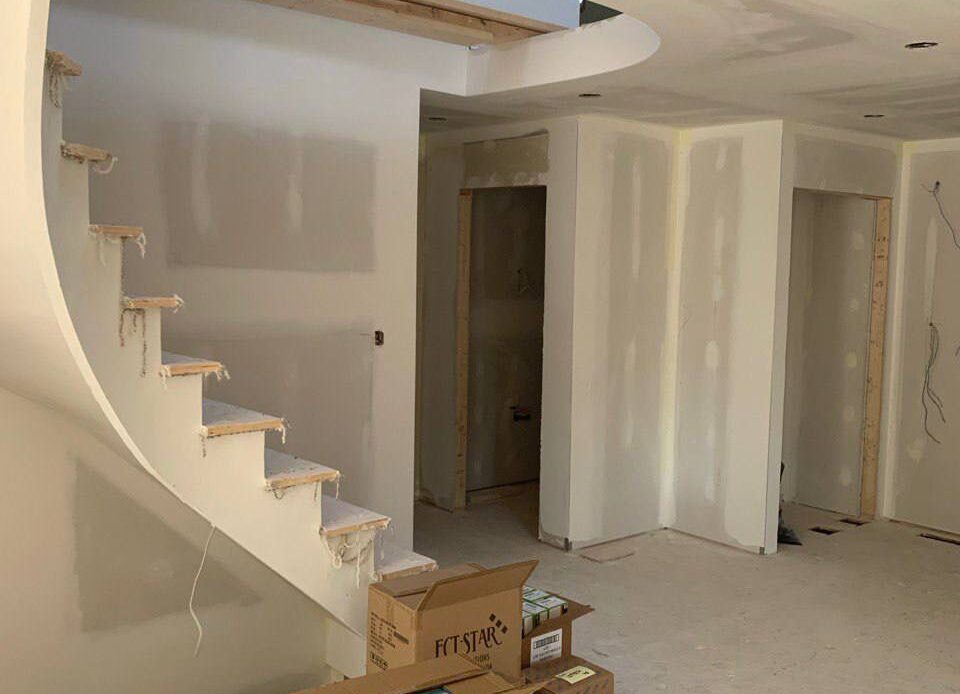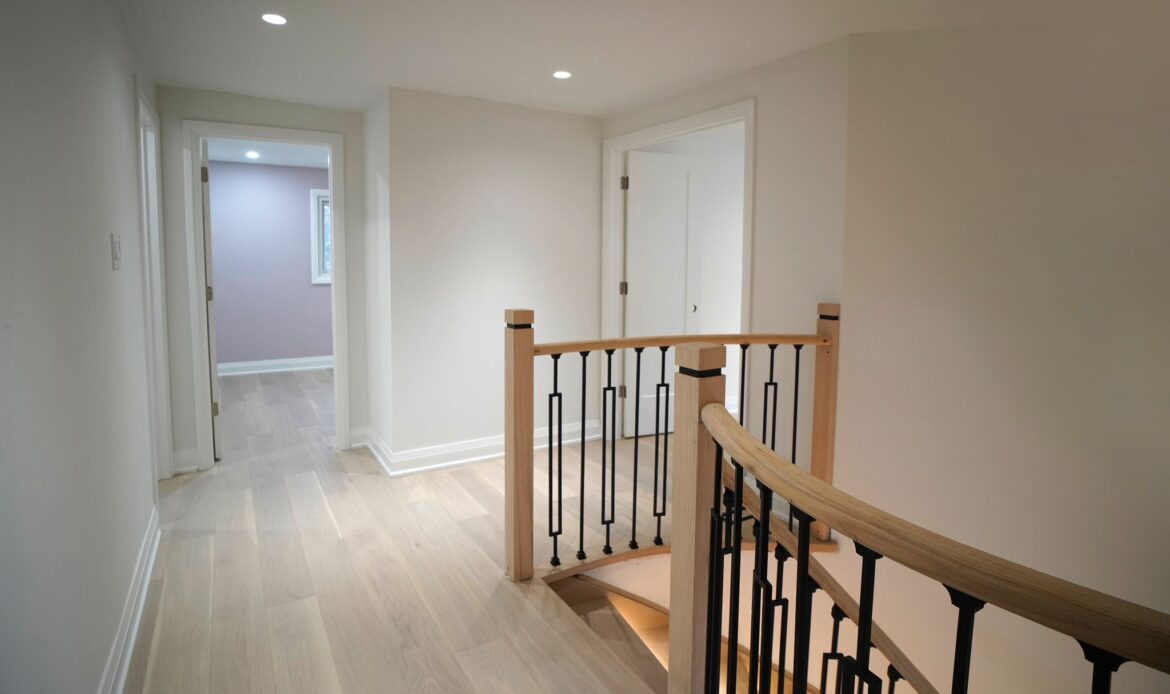Are you thinking about giving your home a fresh new look while also caring for the environment? More homeowners in Ontario are now turning to eco-friendly renovation tips for a greener home as a smart way to save money, reduce energy use, and live more sustainably. Renovating with the planet in mind doesn’t just benefit the environment—it also creates a healthier and more comfortable space for your family.
In this blog, we’ll explore practical and budget-friendly ways you can make your home more eco-conscious, from choosing sustainable building materials to upgrading energy-efficient systems. Whether you’re planning a full home remodel or just small updates, these tips will help you build a greener lifestyle and add long-term value to your property.
Table of Contents
Understanding the Benefits of Eco-Friendly Renovations in Ontario
Choosing eco-friendly renovations in Ontario is more than just a design trend—it’s a smart investment that impacts your home, health, and the planet. Homeowners across the province are realizing that sustainable choices can create a modern, comfortable living space while lowering long-term costs. Let’s break down the main benefits you should know.

1. Lower Energy Costs
One of the biggest advantages of eco-friendly upgrades is energy savings. Simple changes like adding better insulation, upgrading to energy-efficient windows, or installing smart thermostats can dramatically reduce heating and cooling bills. In Ontario, where seasonal temperatures fluctuate widely, these improvements keep your home comfortable year-round without overloading your utility bills.
2. Increased Home Value
More buyers are now looking for green, sustainable features in homes. By choosing eco-friendly renovations, you make your property more appealing in the competitive Ontario housing market. Features such as efficient lighting, low-flow plumbing fixtures, and durable sustainable materials can give your home a modern edge and boost resale value.
3. Healthier Living Spaces
Eco-friendly materials often contain fewer chemicals and toxins compared to traditional options. For example, low-VOC paints and natural flooring reduce indoor air pollution, which is especially important for families with children, seniors, or anyone with allergies. A greener renovation means you’re not only protecting the planet but also creating a healthier home environment.
4. Government Incentives and Rebates
Ontario homeowners can take advantage of various rebates and programs for eco-friendly upgrades. From tax credits to grants for energy-efficient heating systems and renewable energy solutions, these incentives make sustainable renovations more affordable. Checking local rebate programs before starting your project can save you thousands of dollars.
5. Reduced Environmental Impact
Every renovation choice you make—from recycled building materials to water-saving fixtures—helps reduce your carbon footprint. Over time, these small changes contribute to a bigger impact, lowering waste and preserving resources for future generations. For families who want to live more responsibly, eco-friendly renovations are the perfect step forward.
In short, eco-friendly renovation tips for a greener home are not just about style—they’re about creating lasting value, lowering costs, and protecting both your family and the environment. Ontario homeowners have a unique opportunity to embrace sustainability while enjoying all the modern comforts of a well-renovated home.
Top Eco-Friendly Renovation Tips for a Greener Home in Ontario
When it comes to creating a more sustainable home, the choices you make during a renovation can have a lasting impact. Whether you’re planning a full remodel or small upgrades, eco-friendly renovations in Ontario offer practical solutions that save money, improve comfort, and reduce your environmental footprint. Here are some of the most effective tips to help you build a greener home.
1. Upgrade to Energy-Efficient Windows and Doors
Old, drafty windows and doors are a major source of energy loss in many Ontario homes. By replacing them with energy-efficient models that meet ENERGY STAR® standards, you can cut down on heating and cooling costs while maintaining consistent indoor temperatures. In addition, properly sealed frames prevent cold drafts in winter and keep cool air inside during hot summers.
2. Improve Insulation and Air Sealing
Ontario’s climate requires homes to be well-insulated to handle both frigid winters and humid summers. Investing in eco-friendly insulation materials like cellulose, wool, or recycled denim helps maintain energy efficiency while reducing reliance on synthetic products. Sealing gaps around windows, doors, and ducts further improves your home’s performance, ensuring no energy is wasted.
3. Choose Sustainable Flooring Options
Flooring plays a major role in both the look and sustainability of your home. Instead of traditional hardwood or vinyl, consider renewable and eco-friendly materials like bamboo, cork, reclaimed wood, or recycled tile. These options are not only stylish and durable but also reduce the demand for non-renewable resources. Plus, they often contain fewer chemicals, making them healthier for indoor air quality.
4. Opt for Low-VOC Paints and Finishes
Paint is an essential part of most renovations, but many traditional paints contain volatile organic compounds (VOCs) that pollute indoor air. Switching to low-VOC or zero-VOC paints ensures a healthier environment for your family while reducing harmful emissions. These paints are now available in a wide range of colours and finishes, so you don’t have to compromise on style.
5. Install Energy-Efficient Appliances
Appliances like refrigerators, dishwashers, and washing machines are everyday essentials that can consume a lot of energy. Choosing ENERGY STAR®-certified appliances ensures lower utility bills and reduced energy waste. Look for models that also offer water-saving features, since water conservation is just as important for building a greener home.
6. Embrace Water-Saving Fixtures
Water use is a big concern in many Ontario households, especially during the summer months. Installing low-flow toilets, faucets, and showerheads can significantly reduce water consumption without sacrificing comfort. For larger renovations, consider adding a greywater recycling system or rainwater collection setup, which can be used for outdoor irrigation.
7. Use Recycled and Locally-Sourced Materials
When selecting renovation materials, consider recycled or reclaimed options such as salvaged wood, recycled glass countertops, or reclaimed bricks. Sourcing materials locally also reduces the environmental impact of transportation while supporting Ontario businesses. Not only are these materials eco-friendly, but they often add unique character and charm to your home.
8. Switch to LED Lighting
Lighting upgrades are one of the simplest yet most impactful eco-friendly renovation tips. Replacing outdated bulbs with LED lights reduces electricity consumption by up to 80% and lowers replacement costs since LEDs last much longer than traditional bulbs. Smart lighting systems can also be installed, allowing you to control usage more efficiently.
9. Consider Renewable Energy Solutions
For homeowners looking to make a bigger change, renewable energy is a powerful option. Solar panels, for example, can provide clean electricity while reducing long-term energy costs. While the upfront investment may be higher, Ontario residents may qualify for rebates or incentives that make these systems more affordable.
10. Incorporate Natural Light and Ventilation
Designing your home to maximize natural light reduces the need for artificial lighting during the day. Skylights, larger windows, and open floor plans can make spaces brighter and more inviting. Pairing this with good ventilation—such as energy-efficient fans or HRV (heat recovery ventilator) systems—helps maintain indoor air quality without wasting energy.
Planning Your Eco-Friendly Renovation
Taking on an eco-friendly renovation in Ontario requires more than just choosing sustainable materials. Proper planning ensures that your project saves energy, reduces waste, and adds long-term value to your home. Whether you’re updating a single room or completing a full remodel, a well-thought-out plan helps you make informed choices that align with both your lifestyle and environmental goals.

1. Set Clear Sustainability Goals
The first step is deciding what you want to achieve with your renovation. For some homeowners, the goal may be reducing energy bills through improved insulation and energy-efficient windows. Others may prioritize using recycled or locally sourced materials to lower their carbon footprint. Setting clear objectives helps guide your decisions and ensures that every choice supports your vision of a greener home.
2. Budget for Green Upgrades
Eco-friendly renovations don’t always mean higher costs, but it’s important to allocate your budget wisely. While energy-efficient appliances, solar panels, or sustainable flooring may require more upfront investment, they can save money in the long run by lowering utility bills and reducing maintenance. In Ontario, you can also explore government rebates and incentive programs that make green upgrades more affordable.
3. Choose the Right Professionals
Working with a contractor or renovation company that specializes in eco-friendly renovations in Ontario can make a big difference. These professionals are knowledgeable about green building standards, such as LEED certification and Ontario Building Code energy-efficiency requirements. They can recommend sustainable materials, suggest smart design solutions, and ensure your project meets both environmental and safety standards.
4. Prioritize Energy Efficiency
One of the most impactful parts of any green renovation is improving energy efficiency. Consider upgrading to ENERGY STAR–certified appliances, installing LED lighting, and enhancing insulation in walls and attics. Replacing old windows and doors with high-performance models can significantly reduce heat loss during Ontario’s cold winters, making your home more comfortable and eco-friendly.
5. Select Sustainable Materials
The materials you choose can have a lasting effect on the environment. Opt for renewable, recycled, or locally sourced products whenever possible. Popular options include bamboo or cork flooring, reclaimed wood for cabinetry, and recycled glass countertops. Low-VOC (volatile organic compound) paints and finishes are also a smart choice, as they improve indoor air quality while reducing harmful emissions.
6. Plan for Water Conservation
Ontario homes can benefit greatly from water-saving upgrades. Installing low-flow toilets, water-efficient faucets, and showerheads helps reduce water waste without sacrificing performance. If possible, consider adding a greywater recycling system or a rainwater harvesting setup to further support sustainable water use.
7. Reduce Construction Waste
Renovation projects often generate a lot of waste, but with careful planning, you can minimize it. Work with your contractor to recycle materials like metal, glass, and wood. Donating reusable items, such as old cabinetry or appliances, to local charities also keeps materials out of landfills while helping your community.
8. Incorporate Smart Technology
Technology plays an important role in eco-friendly living. Smart thermostats, lighting controls, and energy monitoring systems help you manage energy use more effectively. With Ontario’s fluctuating climate, these tools can adjust heating and cooling automatically, reducing waste and lowering bills.
9. Think Long-Term
When planning your eco-friendly renovation, look beyond immediate savings. Durable materials, efficient systems, and sustainable design choices all contribute to a home that performs better for years to come. Long-term thinking also means designing flexible spaces that adapt to future needs, reducing the likelihood of further renovations down the road.
Common Mistakes to Avoid
When planning eco-friendly renovations in Ontario, many homeowners make avoidable mistakes that can limit the effectiveness of their efforts. While it is exciting to create a greener, more energy-efficient home, overlooking certain details can lead to higher costs, wasted resources, or missed opportunities for long-term savings. By being aware of these common mistakes, you can plan smarter, avoid frustration, and ensure your renovation truly supports sustainability.
1. Ignoring Energy Efficiency First
One of the biggest mistakes is focusing only on eco-friendly materials without addressing energy efficiency. For example, installing bamboo floors or recycled countertops is great, but if your windows leak heat in winter or your home lacks proper insulation, you’ll still waste energy. Prioritizing insulation, sealing air leaks, and upgrading to energy-efficient windows and doors should come first in any eco-friendly renovation. This step ensures your home becomes more comfortable and reduces utility bills year-round.
2. Choosing Unsuitable Materials
Many homeowners choose “green” materials without researching if they are right for the Ontario climate. For example, some recycled or reclaimed wood products may warp in humid conditions if not properly treated. Similarly, certain paints labelled eco-friendly might not provide the durability you need for Canadian winters. Always check the durability, local availability, and maintenance requirements of any eco-friendly materials before committing. Choosing products sourced locally also lowers the carbon footprint associated with transportation.
3. Overlooking Water Conservation
Eco-friendly renovations often focus heavily on energy, but water conservation is just as important. In Ontario, where households use large amounts of water for showers, toilets, and laundry, not upgrading fixtures is a missed opportunity. Failing to install low-flow showerheads, dual-flush toilets, or water-efficient faucets means higher water bills and unnecessary waste. Simple upgrades in the bathroom and kitchen can save thousands of litres of water annually.
4. Skipping Proper Waste Management
Renovation projects generate a lot of waste, and many homeowners fail to plan how to handle it responsibly. Throwing everything into a dumpster increases landfill use and harms the environment. Instead, consider recycling construction materials, donating usable fixtures, or repurposing wood and metal. Ontario has recycling programs and salvage centres that make this easier. Proper waste management not only helps the environment but may also save you disposal costs.
5. Not Considering Long-Term Maintenance
Eco-friendly renovations should be designed for the long run. A mistake many people make is choosing trendy materials or solutions without thinking about maintenance. For example, some “green” flooring options may require special cleaning products or frequent replacements. A renovation is truly sustainable only if it is durable, low-maintenance, and cost-effective over time. Look for materials and systems that provide long-lasting value while still supporting your sustainability goals.
6. Forgetting About Indoor Air Quality
A healthier home environment is one of the main benefits of eco-friendly renovations. However, some homeowners neglect indoor air quality when making changes. Using conventional paints, adhesives, or sealants that release volatile organic compounds (VOCs) can undo your eco-friendly efforts by harming your health. Always choose low-VOC or zero-VOC products to create a cleaner, safer indoor space. Adding proper ventilation also ensures good airflow and reduces moisture buildup, which is especially important in Ontario’s humid summers and cold winters.
7. Skipping Professional Guidance
Many homeowners attempt eco-friendly renovations on their own to save money, but this can lead to costly mistakes. Without proper expertise, it’s easy to overlook energy audits, building codes, or rebate programs available in Ontario. Working with an experienced contractor familiar with sustainable building practices ensures your renovation is done right the first time. A professional can also guide you to available government incentives, which help offset upfront costs.
8. Failing to Take Advantage of Rebates and Incentives
Ontario and federal programs often offer rebates for eco-friendly upgrades, such as installing energy-efficient windows, upgrading insulation, or switching to renewable energy systems. A common mistake is not researching these programs before starting a project. Missing out on rebates can mean paying thousands more than necessary. Always check available incentives before beginning your renovation so you can maximize your savings.
Conclusion
Eco-friendly renovations in Ontario are no longer just a trend—they’re a smart and sustainable way to upgrade your home. By choosing energy-efficient materials, water-saving fixtures, and green building practices, you not only reduce your environmental footprint but also cut down on long-term costs. Whether you’re planning a small upgrade or a complete home renovation, focusing on eco-friendly solutions ensures a healthier living space for your family and contributes to a greener future. With the right planning and guidance, homeowners in Ontario can enjoy stylish, functional, and sustainable homes while boosting property value. If you’re ready to take the next step, exploring eco-friendly renovation options is one of the best investments you can make for both your lifestyle and the planet.
FAQs
-
What are the main benefits of eco-friendly renovations in Ontario?
Eco-friendly renovations reduce energy bills, improve indoor air quality, and increase property value. They also help homeowners lower their carbon footprint while creating a healthier and more sustainable living environment.
-
How much does an eco-friendly renovation cost in Ontario?
The cost depends on the size of the project and the materials chosen. While eco-friendly materials may cost slightly more upfront, they often provide long-term savings through reduced utility bills and lower maintenance costs.
-
Are there government rebates or incentives for eco-friendly home upgrades in Ontario?
Yes, Ontario homeowners may qualify for rebates and grants for energy-efficient upgrades like insulation, windows, and heat pumps. These programs help offset initial costs and encourage sustainable renovations.
-
Can I make my renovation eco-friendly on a budget?
Absolutely. Start with simple changes like LED lighting, low-flow faucets, and eco-friendly paints. Even small upgrades can make a big difference in reducing energy use and improving sustainability.
-
Why should I hire a professional contractor for eco-friendly renovations?
A professional contractor ensures your renovation is completed with the right sustainable materials, efficient installation, and compliance with Ontario building codes. This not only improves quality but also maximizes long-term benefits.

